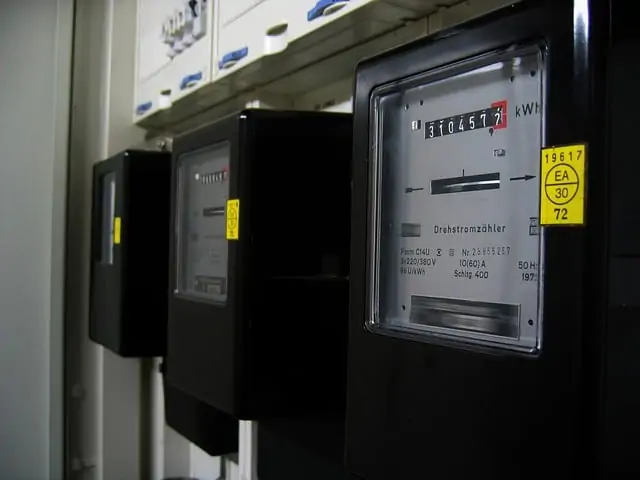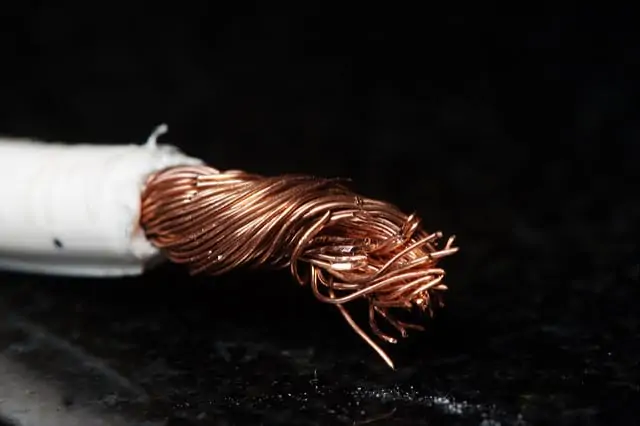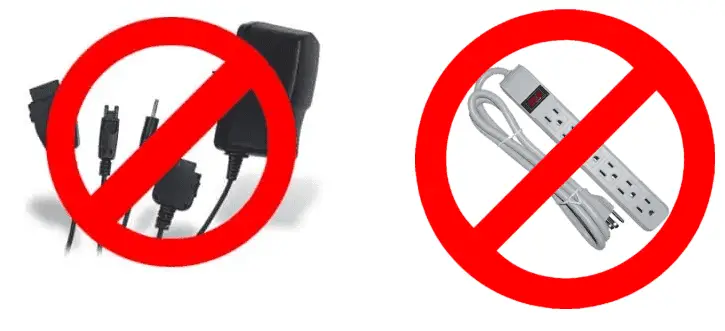Are there any circumstances where Powerline Adapters will NOT work? It is understandable that people may be reluctant to invest in a pair of adapters if they have doubts that they may not work in their own house. So are there any specific circumstances with house wiring, configuration and layout that makes it unlikely or impossible for a Powerline Adapter to work?
Powerline Adapters will work fine in most newer houses and apartments. In a small number of cases they may not work, due to several factors, such as the type, structure, quality or age of the electrical circuitry, houses with multiple meters, or the size of the house. They also do not always work across different circuits or phases.
Let’s go through these unique cases in some more detail.
Where You Might Struggle to Get Them To Work
As we said above, in the vast majority of houses, especially modern and semi modern ones, they will work just fine without any problems.
The electrical wiring is set up in a way that allows the two adapters plugs to pair up and communicate and send the data to each other at high speed to allow for a strong reliable internet connection anywhere in the home. However lets explore the small number of different scenarios where a Powerline Adapter may not work.
Houses With Multiple Electric Meters
This is possibly the most common scenario in which a Powerline Adapter may not work. It is most common in very large houses or older houses that have newer extensions built onto them. Sometimes in these cases a separate electrical meter is installed for different parts of house which will presumably run on its own circuit and panel/sub-panel.
Similarly, if your house has more than one fuse box and the adapters are on differing fuse box circuits, they may also not be able to communicate. Also in properties with three-phase power supplies (which is rare) then Powerline Adapters will only work when connected on the same phases. These scenarios are not common but see this article for an excellent summary of the subject.
In this case the Powerline Adapters may not be able to communicate depending on where they are located relative to each other. If one adapter is on a circuit on one meter and the other adapter is on a circuit on the other meter or fuse box, then there is no way for the plugs to communicate so the data will not be sent. The “pair” light on the front of most adapters to tell you that the plugs are connected will not come on.

Again this is only realistically in houses where you have separate meters with separate feeds from the utility company, which in reality is very rare. In houses with just one meter and one feed, Powerline Adapters, especially modern ones, can usually bridge the gaps between different circuits and work anywhere. They can usually bridge different phases but performance may drop each time they cross over into a new phase.
Similarly, they will also work between the main house and an outbuilding such as garage in most cases as long as the power to that building comes from the same meter and panel as the main house. There are some other factors which may interfere with the quality of the signal sent. See our separate article on this topic.
In houses where this is not the case but you still cannot get the Powerline Adapters to pair up, the first thing to do is try the Powerline Adapter on the receiving end in a different plug socket in the same room. It can often be that there is some idiosyncracy in the house circuitry or one particular plug socket that stop them pairing up from that socket.
Moving to a different socket in the same room most often solves this and gets the plugs to pair up fine. If you cannot get them working in any socket in a certain room then try in other rooms to see if it is the Powerline Adapters themselves that are faulty. Again these instances should be very rare and with a bit of experimenting it should be possible to get them working.
Houses With Old or Worn Electrical Wiring
Powerline Adapters rely on the electrical wiring of the house in order to work, and in most cases again it works just fine. House electrical wiring is most commonly made of copper, and as long as the copper is still in reasonably good condition it will send the data just fine.
However in very old houses especially (we are talking over a hundred years old realistically, Victorian era houses and older) the wiring may be so worn as to prevent or limit the copper transferring the data effectively.

Old or worn copper wiring can stop Powerline Adapters working properly
In these cases again there is no guarantee they will not work; you may get a weaker signal and therefore a slower speed, or perhaps none at all. Unfortunately you may not know for sure until you try it. But it is something to be aware of; that the older the house and/or electrical wiring the more chance of the circuitry not transferring data effectively over Powerlines.
Over Too Long A Distance
Also bear in mind that the maximum technical range of powerline adapters (or, more accurately, the copper wiring the signals is sent over) is 100 meters or 328 ft. Therefore the length of circuitry the data needs to be sent over can’t exceed this, or the adapters cannot communicate.
In smaller and medium sized houses there’s no problem here. Ever some larger houses you’re fine. But start getting into really large houses, or external building a long way (like 50+ meters) from the main building, you could start to run into problems.
House wiring can be complex and loop over itself in some cases, covering more distance than you might think. Therefore, in some rare cases, distance can be an issue. But in most scenarios, you should be fine.
Using Certain Plugs or Appliances Nearby
Powerline Adapters are known to sometimes pick up interference from nearby devices, sometimes wall chargers or a/c plugs such as phone and USB chargers, as opposed to normal appliance plugs that are on white goods.
Charger plugs can sometimes give off a signal that interferes with the signal of Powerline Adapters. Again it will not usually stop the Powerline working altogether; it will usually slow the speed a little so you do not get the maximum bandwidth out of it. The same is true if using heavy energy consumption devices like washers or dryers nearby.

Powerline Adapters do not like phone chargers nearby or being plugged into power strips
Powerline Adapters also do not work best when plugged into power strip or multiplugs; they work by far the best when plugged directly into wall sockets. Again it will not necessarily stop them from working, but it may reduce the strength and quality of the signal delivered so you get lower speeds.
Try to plug them directly into main wall sockets for best performance; if you are running short on sockets then adapters with passthrough features are available so you can plug a device into the front of the adapter itself and not lose the plug socket.
Using Powerline Adapters Across House Circuitry
Another important factor to consider is the performance of powerline adapters does vary between different houses and circuits, and there are some qualifiers and caveats to add:
- Powerline adapters will not work between separate residences and apartments within the same building that are on separate feeds.
- Powerline adapters may or may not work across different circuit phases within the same house. Most of the time they will, but there are exceptions.
- When they do work across phases, there can sometimes be a drop in speeds each time they cross over to a new phase.
- They will not work when trying to connect two places supplied by separate meters/feeds.
- See our full article on using powerline across different circuits for a very detailed breakdown of this issue.
Summary
To sum up then, in the vast majority of houses you should have no problem with getting Powerline Adapters to work. Most models and brands are simple plug and play devices that will pair up automatically when plugged in and you are ready to go. Even if they do not work at first a little experimentation trying the plugs in different sockets should usually get them working.
In a small number of cases, Powerline Adapters may not work, perhaps down to the size of the house or the quality or age of the wiring. Unfortunately there is no way to know 100 percent for sure until you try them, but we have pointed out a few instances where you may have some troubles. Be especially cautious in very old or very large houses or houses with multiple power sources.
In any case entry level Powerline Adapters are not hugely expensive so they are worth trying if you want a to improve your internet connection somewhere in the home. In most houses you should have no problem and you can always seek a refund if for some reason they don’t work.
